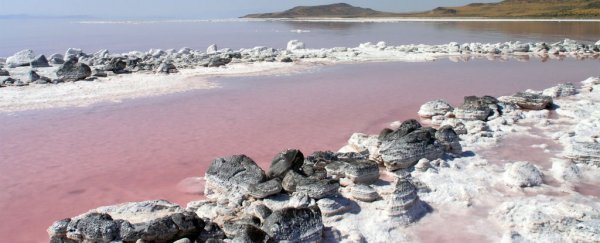In the space of just five years, levels of toxic methylmercury in Utah's Great Salt Lake have dropped by almost 90 percent, and scientists are still trying to explain where it's gone.
While that disappearance might sound like good news, it's not due to new environmental policies or local clean-up efforts. And, strangely enough, the local wildlife is still carrying around just as much toxicity as before, which means something just doesn't add up.
Back in 2010, mercury levels in the Great Salt Lake duck population were so high, local officials were forced to issue a rare advisory that hunters avoid eating them for fear of poisoning.
Mercury was also found in the surrounding wetlands, leading researchers to connect these elevated levels to the methylmercury - an organic form of the element - produced by microbes on the lake bed as they absorb the mercury from the atmosphere.
"That created this expectation that there's a link between these high concentrations of methylmercury down in the deep brine layer and the elevated concentrations in waterfowl in the wetlands adjacent to the lake," says geologist William Johnson from the University of Utah.
But by 2015, almost 90 percent of that methylmercury had vanished, even as levels in the local wildlife and wetlands remained elevated.
"If there's a direct connection between the environment at the bottom of the lake and the mercury in the ducks, you'd think you'd see a corresponding reduction of mercury in biota [animal and plant life]," says Johnson.
"We didn't see that."
The difference between mercury and methylmercury is that elemental mercury - the kind found in old thermometers - evaporates easily into the atmosphere, whereas methylmercury can accumulate in the sediment and be passed up the food chain.
This has been happening at the Great Salt Lake in unprecedented quantities - US Geological Survey tests back in 2005 revealed that it had some of the highest mercury readings ever recorded in a body of water anywhere in the country.
It's all down to a Union Pacific railway line that divides the Great Salt Lake into a smaller northern arm and a larger southern arm, which causes the separated waters to experience very different conditions.
 The blue south arm (left) and the purple north arm (right) of the Great Salt Lake. Credit: University of Utah
The blue south arm (left) and the purple north arm (right) of the Great Salt Lake. Credit: University of Utah
Because the northern arm receives no major river inflow, it's become far saltier than the southern arm. A number of pipes allow this denser water to flow into the southern, where it sinks to the bottom, and creates a heavier bottom layer above the lake bed sediment.
This prevents fresh oxygen from reaching the deepest waters of the Great Salt Lake, so microbes on the lake bed have to find something else to 'breathe'. They first depleted the nitrate, then the iron, manganese, and finally the sulphate.
We know that these microbes have started processing sulphate because the byproduct - sulphide - is responsible for the strong rotten egg smell that occasionally wafts from the lake.
This process also results in the conversion of any elemental mercury in the lake - deposited from the surrounding atmosphere - into toxic methylmercury.
"Mercury's really tricky," says Johnson. "It changes form."
In 2013, the pipes connecting the two arms of the Great Salt Lake were closed off for repair, and two years later Johnson and his team found that methylmercury in both the water and the lake bed sediment had decreased by 88 percent.
It was expected that because this source of methylmercury had been temporarily cut off, we'd see an effect on the millions of birds that migrate to the lake every year, but carcasses collected both before and after the pipe closures showed no significant change in mercury levels.
And as the team explains, the source of methylmercury in the surrounding wetlands is also unknown, as is the exact mechanism behind the almost complete disappearance of mercury in the deep lake layer since 2010.
But the investigation is ongoing, and with a much larger breach in the divide between the north and south arms of the lake having been opened in December 2016, the researchers are keen to see if a new "methylmercury factory" will appear at the bottom of the lake.
The study has been published in Environmental Science & Technology.
